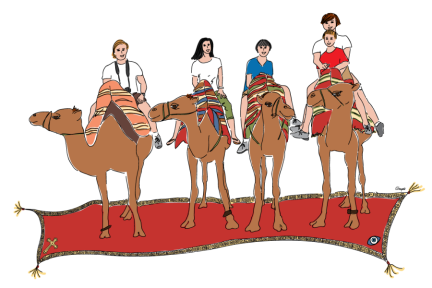While the architectural imagery, history, religion and cuisine in India are distinct and fascinating, the children in India were also delightful to observe. The people in India stood out to me for their lovely skin and silky hair. The children with their spry bodies and colorful spirits stood out to me for their curiosity and innocence.
The people in India stood out to me for their lovely skin and silky hair. The children with their spry bodies and colorful spirits stood out to me for their curiosity and innocence. Out of 1.25 billion people, approximately 440 million of the population are children. This is a staggering statistic to me. From what I’ve read, the children are enrolled in school but approximately half drop out of school to work and help their families. The street children in India are unsupervised children who work independently. Because of the risk of having their earnings taken, they immediately use them for food. Most families are multigenerational (as in many cultures) and they follow the joint family system where many families live together in one household.
Out of 1.25 billion people, approximately 440 million of the population are children. This is a staggering statistic to me. From what I’ve read, the children are enrolled in school but approximately half drop out of school to work and help their families. The street children in India are unsupervised children who work independently. Because of the risk of having their earnings taken, they immediately use them for food. Most families are multigenerational (as in many cultures) and they follow the joint family system where many families live together in one household.
The recreational games that Indian children play consist of Parcheesi (the national game of India), kite flying, hockey, cricket, chess and soccer. Because India is known for their festivals, many Indian children attend the following festivals: Diwali, Holi and Rakhi are a few of the many festivals they celebrate. In their daily greetings, the children and adults greet each other with “Namaste” which means “I bow to you” or “I bow to your true self.” Faith and family are valued in this culture.
 We saw children work alongside their families in the fields, outside of temples and forts, etc. This is common in many countries.
We saw children work alongside their families in the fields, outside of temples and forts, etc. This is common in many countries.  From a psychoeducational perspective, I thought about the children learning alongside the adults, —what emotional stability they must feel (being with family) working and learning in an “outdoor classroom”! Children in America have to go on a field trip, usually, to experience this kind of learning!
From a psychoeducational perspective, I thought about the children learning alongside the adults, —what emotional stability they must feel (being with family) working and learning in an “outdoor classroom”! Children in America have to go on a field trip, usually, to experience this kind of learning!

